동사의 3단변화
동사의 3단변화는 한국어의 문법적인 개념 중 하나로, 동사의 어간이 다른 형태로 변화하는 것을 말합니다. 동사는 주로 인칭, 시제, 어미에 따라 변화하는데, 이 중에서 3단은 어미에 의해 변화하는 것을 말합니다. 동사의 3단변화를 이해하면 한국어에서 동사의 활용 방법을 더 잘 이해할 수 있습니다.
기본 동사의 규칙적인 3단변화
규칙적인 3단변화는 동사의 어간이 변화하는 규칙에 따라 진행됩니다. 어간은 동사의 핵심적인 부분으로, 변하지 않는 형태입니다. 동사의 어말에 붙는 어미에 따라 어간의 형태가 변화하게 됩니다.
한 예로, “하다”라는 동사를 살펴보겠습니다. “하다”는 규칙적인 3단변화를 따릅니다. 기본 형태인 “하-“에 어미를 붙여 변화합니다. 예를 들어, “나는 한다”라고 말할 때, “하-“가 어간이 되고, “-ㄴ다”가 어미가 됩니다.
3단변화에 영향을 주는 요소
3단변화에는 몇 가지 요소가 영향을 줍니다. 이러한 요소에 따라 어간의 형태가 달라질 수 있습니다.
첫 번째 요소는 활용 그룹입니다. 동사는 어느 그룹에 속하는지에 따라 변화하는 패턴이 달라집니다. 그룹에 따라 어간의 형태와 변화 양상이 다를 수 있습니다.
두 번째 요소는 동사 어간의 발음 규칙입니다. 어간의 마지막 자음에 따라 어간이 변할 수 있습니다. 예를 들어, 자음으로 끝나는 동사의 경우 어간이 변할 때 자음의 발음이 달라질 수 있습니다.
세 번째 요소는 선어말 어미와의 조화입니다. 선어말 어미는 문장의 시작 부분에 오는 어미로, 동사의 어간과 조화를 이루어야 합니다. 어간의 형태가 선어말 어미에 따라 변경될 수 있습니다.
비규칙적인 3단변화
규칙적이지 않은 3단변화도 존재합니다. 이는 정규 규칙에서 벗어난 변화 양상을 보여줍니다. 이러한 비규칙적인 3단변화는 특정 동사에만 적용되는 경우도 있습니다.
예를 들어, “불규칙동사 3단변화 pdf”라는 동사는 어간이 변할 때 불규칙한 형태로 변화합니다. “불규칙동사 3단변화 pdf”의 어미에는 “-는다” 대신 “-는데”가 붙습니다.
예외적인 3단변화
일부 동사는 기본 동사에서 예외적인 3단변화 양상을 보여줍니다. 이러한 동사는 특정한 형태로 변할 때 인칭, 시제, 어미의 변화가 예외적인 경우가 있습니다.
예를 들어, “오다”라는 동사는 3단 변화에서 예외적인 동사로 알려져 있습니다. “오다”의 어간은 “오-“가 아닌 “온-“으로 변화합니다. 따라서 “온다”가 아닌 “온다”로 변화합니다.
3단변화의 활용 방법
3단변화는 한국어에서 동사를 활용하는 방법을 이해하는 데 도움을 줍니다. 일상 대화나 작문에서 동사를 자연스럽게 사용하고자 할 때, 3단변화를 잘 활용할 수 있어야 합니다.
표준 문어와 구어체에서 3단변화의 사용 방법에는 차이가 있을 수 있습니다. 표준 문어에서는 정확한 형태 변화를 따라야 하지만, 구어체에서는 약간의 생략이나 단축된 형태를 사용할 수도 있습니다.
또한, 3단변화를 다른 문법 형식과 조합하여 다양한 의미를 전달할 수도 있습니다. 예를 들어, 부정사에 3단변화를 더하는 경우, 동사의 동시성과 사건성을 나타낼 수 있습니다.
FAQs
1. 동사의 3단변화란 무엇인가요?
동사의 3단변화는 동사의 어간이 어미에 따라 변화하는 것을 말합니다.
2. 동사의 3단변화에는 어떤 요소가 영향을 주나요?
3단변화에는 활용 그룹, 동사 어간의 발음 규칙, 선어말 어미와의 조화가 영향을 줍니다.
3. 규칙적인 3단변화와 비규칙적인 3단변화에는 어떤 차이가 있나요?
규칙적인 3단변화는 규칙에 따라 어간이 변화하는 것이고, 비규칙적인 3단변화는 규칙에서 벗어난 변화 양상을 나타냅니다.
4. 예외적인 3단변화는 어떤 경우에 나타날까요?
일부 동사는 기본 동사에서 예외적인 변화 양상을 보여 다른 형태로 변화합니다.
5. 3단변화는 어떻게 활용할 수 있나요?
3단변화를 이해하면 한국어에서 동사를 자연스럽게 활용할 수 있으며, 다른 문법 형식과 조합하여 다양한 의미를 전달할 수 있습니다.
사용자가 검색한 키워드: 동사의 3단변화 불규칙동사 3단변화 pdf, find 3단변화, see 3단변화, forget 3단변화, hold 3단변화, lose 3단변화, shine 3단변화, use 3단변화
Categories: Top 54 동사의 3단변화
[09] 불규칙 동사 3단 변화형 같이 외워볼까요? 2분 집중!
여기에서 자세히 보기: taomalumdongtien.net
불규칙동사 3단변화 Pdf
한국어를 배우는 데 있어 가장 고민스러운 부분 중 하나는 동사의 활용 형태입니다. 대부분의 동사들은 일정한 규칙에 따라 활용되지만, 불규칙동사는 이러한 규칙에서 벗어나기 때문에 학습하기 어려운 편입니다. 특히 3단변화 형태의 불규칙동사들은 한국어 학습자들에게 특별한 어려움을 줄 수 있습니다.
불규칙동사 3단변화란 동사의 어간이 변화하면서 과거형, 현재진행형, 미래형 등 다양한 시간 표현에 따라 형태가 변화하는 것을 말합니다. 이 형태는 보통 동사의 어간 뒤에 별도의 어미가 붙어 나타나며, 이 어미들은 동사의 종류에 따라 다른 양상을 보입니다.
예를 들어, ‘가다’라는 동사는 불규칙동사 3단변화에 해당됩니다. 이 동사의 어간인 ‘가’ 뒤에 따라오는 어미들은 시간에 따라 형태가 변합니다. ‘가다’의 과거형은 ‘갔다’, 현재진행형은 ‘가고 있다’, 미래형은 ‘갈 거예요’와 같이 형태가 달라지는 것입니다.
불규칙동사의 어미 변화를 정확히 알고 활용할 수 있다면, 한국어를 능숙하게 사용하는 데 매우 도움이 됩니다. 그래서 많은 한국어 학습자들은 불규칙동사 3단변화에 대한 규칙과 예외 사항들을 따로 정리한 PDF 자료를 찾아 공부하게 됩니다.
불규칙동사 3단변화 PDF 자료는 다양한 출처와 형식으로 제공되며, 주로 인터넷에서 무료로 다운로드할 수 있습니다. 이 자료들은 보통 한국어 학습자들을 위해 구성되어 있어 초보자부터 중급자까지 적절한 난이도로 구성되어 있습니다. 이 자료들은 개별 동사마다 과거형, 현재진행형, 미래형을 모두 나열하고, 특히 예외 사항들을 상세히 설명하여 학습자들이 혼동하지 않도록 도와줍니다.
불규칙동사 3단변화 PDF 자료에서는 주로 자주 사용되는 불규칙동사들을 다루며, 한국어 학습자들이 일상 속에서 자주 접하게 되는 동사들을 중심으로 다룹니다. 이를 통해 학습자들은 실제 대화나 글쓰기에서 자주 사용되는 동사들의 변화 형태를 익힐 수 있습니다.
FAQs:
Q: 불규칙동사 3단변화 PDF 자료를 사용하는 것이 얼마나 유용한가요?
A: 불규칙동사 3단변화는 한국어를 학습하는 데 있어 중요한 부분이므로, 이에 대한 PDF 자료를 사용하면 학습의 정확성과 효율성을 높일 수 있습니다. PDF 자료는 전체적인 개괄과 다양한 예시를 손쉽게 확인할 수 있도록 구성되어 있어 학습자들이 불규칙동사의 변화 형태를 빠르게 익힐 수 있습니다.
Q: 불규칙동사 3단변화 PDF 자료는 어디서 찾을 수 있나요?
A: 불규칙동사 3단변화 PDF 자료는 인터넷에서 다양한 웹사이트나 블로그에서 무료로 제공되고 있습니다. 다만, 자료의 출처와 신뢰도를 확인한 후 다운로드하는 것이 좋습니다. 또한, 언어 수준과 학습 목표에 따라 적절한 자료를 선택하는 것이 중요합니다.
Q: 불규칙동사 3단변화 PDF 자료는 어떻게 사용해야 할까요?
A: 불규칙동사 3단변화 PDF 자료는 주로 참고 자료로 사용됩니다. 자료에 수록된 불규칙동사의 변화 형태와 예외 사항들을 학습하고, 자주 사용하는 동사들을 실제 대화나 글쓰기에서 적절히 활용하는 데 도움을 받을 수 있습니다. 자료를 반복해서 학습하고 예시를 따라 연습해 보면 좋은 결과를 얻을 수 있습니다.
한국어를 배우는 과정에서 불규칙동사 3단변화는 피할 수 없는 어려운 부분입니다. 하지만 적절한 학습 자료와 꾸준한 연습으로 이 어려움을 극복할 수 있습니다. 불규칙동사 3단변화 PDF 자료를 찾아 참고하며, 시간을 들여 학습하는 노력은 한국어 능력 향상에 큰 도움이 될 것입니다.
Find 3단변화
Korean is a fascinating language with its own unique grammar system. One of the most important concepts to understand is the 3단변화 (three-step changes). These changes occur in verbs, adjectives, and descriptive verbs in different grammatical contexts. In this article, we will dive into this topic in depth, discussing what the 3단변화 is, why it is important, and how to identify and use it correctly. Additionally, we will address common FAQs related to this topic.
What is 3단변화?
3단변화, or the three-step changes, refer to the modification of a verb stem, adjective stem, or descriptive verb stem based on the characteristics of each grammatical context. The term “three-step” originates from the three different forms these stems can take: the base form, the positive form, and the negative form.
Why is it important to understand 3단변화?
Understanding 3단변화 is crucial for accurately conjugating verbs, adjectives, and descriptive verbs in different sentences. By mastering this grammar concept, learners will be able to express themselves more precisely and clearly in Korean. Additionally, it is essential for comprehending Korean literature, media, and everyday conversations.
Identifying 3단변화:
To identify the 3단변화 of a verb, adjective, or descriptive verb, one must determine its stems. In general, verbs have five different stems, while adjectives and descriptive verbs have only one or two stems. These stems serve as the basis for 3단변화.
In verbs, the base stem (infinitive) ends in -da or -ta. To derive the positive stem, remove the last character (-da or -ta). For example, the base stem of the verb “가다” (to go) is “가.” To form the negative stem, remove the last character and add -지 (-ji) for verbs ending in a consonant or -i (-이) for verbs ending in a vowel. Therefore, the negative stem of “가다” would be “가지” in the consonant-ending case, or “가이” for the vowel-ending case.
Adjectives and descriptive verbs follow the same process, but they do not have separate positive stems. They use the base stem for both positive and negative contexts. For instance, the base stem of the adjective “높다” (to be high) is “높.”
Using 3단변화 correctly:
Once you have identified the stems of the verb, adjective, or descriptive verb, you can conjugate them accurately based on the grammar context. Each stem has its own unique conjugation rules, which can be learned through dedicated study and practice.
For example, to form the present tense of a verb, attach the appropriate endings to each stem. The base stem takes -아/-어 (-a/-eo) for vowel-ending verbs and -어 (-eo) for consonant-ending verbs. The positive stem takes -아요/-어요 (-ayo/-eoyo) for vowel-ending verbs and -어요 (-eoyo) for consonant-ending verbs. The negative stem takes -지 않다 (-ji anhda) for both vowel-ending and consonant-ending verbs. Applying these rules, the verb “가다” would be conjugated as “가아요” (positive) and “가지 않다” (negative) in the present tense.
FAQs about 3단변화:
Q1: Can 3단변화 apply to all Korean verbs, adjectives, and descriptive verbs?
A1: Yes, the concept of 3단변화 is universally applicable to all types of verbs, adjectives, and descriptive verbs in the Korean language.
Q2: Are there exceptions to the 3단변화 rules?
A2: While the majority of Korean words follow the 3단변화 rules, there are a few irregular verbs, adjectives, and descriptive verbs that do not. These exceptions should be memorized separately.
Q3: Is it possible to conjugate verbs, adjectives, and descriptive verbs in the past or future tense using 3단변화?
A3: No, 3단변화 is not directly used for past or future tense conjugations. However, it forms the basis for other conjugation patterns used to express those tenses.
In conclusion, the 3단변화 plays a fundamental role in Korean grammar, shaping the way verbs, adjectives, and descriptive verbs are conjugated. Familiarizing yourself with the stems and practicing the conjugation rules will significantly enhance your Korean language skills. Remember, understanding the 3단변화 is essential for expressing yourself accurately and efficiently in Korean and for comprehending various forms of literature and media in the language.
See 3단변화
When learning the Korean language, one important aspect that learners must grasp is verb conjugation. Unlike many languages, Korean verbs undergo various changes to reflect their tense, mood, and honorifics. Understanding these changes, also known as “conjugation paradigms,” is essential for expressing oneself accurately in Korean. Among the different conjugations, the 3단변화 (3-danbyeonwha) is a conjugation paradigm that plays a significant role in Korean grammar. In this article, we will delve into the intricacies of 3단변화, explore its usage, provide examples, and address commonly asked questions regarding this grammar pattern.
1. What is 3단변화?
3단변화, also known as “the third person conjugation,” is a verb conjugation pattern in Korean. It is called 3단변화 because it affects the verbs in the third person, meaning it applies to “he,” “she,” and “it” in English. When a verb undergoes 3단변화, it experiences changes in its final batchim (or final consonant) based on certain rules and patterns in order to maintain harmony and phonetic flow. These changes contribute to the overall rhythm and sound of the Korean language.
2. How is 3단변화 formed?
The formation of 3단변화 is relatively straightforward once you understand its rules. The main rule revolves around the final batchim of the verb stem. Depending on the type of final batchim, different transformations occur. The three main types of final batchim in Korean are: ㄱ, ㄷ, and ㅂ. Below are the changes that take place for each type:
– ㄱ batchim: When a verb stem ends with a ㄱ batchim, it is replaced with an ㅇ batchim in the 3단변화. For example, the verb “가다” (to go) becomes “갑니다” (goes).
– ㄷ batchim: When a verb stem ends with a ㄷ batchim, it is replaced with a ㄹ batchim in the 3단변화. For example, the verb “먹다” (to eat) becomes “먹습니다” (eats).
– ㅂ batchim: When a verb stem ends with a ㅂ batchim, it is replaced with a 우 batchim in the 3단변화. For example, the verb “입다” (to wear) becomes “입습니다” (wears).
It is important to note that some verbs undergo irregular changes instead of following the standard 3단변화 rules, making it necessary to memorize them individually.
3. How is 3단변화 used?
The 3단변화 is commonly used in various contexts. Some of the most prevalent usages include:
– Standard formal speech: In formal settings, the 3단변화 is employed to maintain politeness and respectfulness towards the listener or the subject being discussed.
– Presentations or speeches: When delivering a presentation or speech, it is customary to use the 3단변화 to project professionalism and clarity.
– Writing formal letters or emails: In written communication, the 3단변화 aids in maintaining a respectful tone and adherence to formal standards.
– News broadcasts or announcements: News anchors and broadcasters often use the 3단변화 to convey information clearly and with proper decorum.
4. Examples of 3단변화:
To better understand how 3단변화 works, let’s look at a few examples:
– 가다 (to go):
– Standard form: 가다 (ga-da)
– 3단변화: 갑니다 (gam-ni-da)
– 늦다 (to be late):
– Standard form: 늦다 (neut-da)
– 3단변화: 늦습니다 (neut-seum-ni-da)
– 초대하다 (to invite):
– Standard form: 초대하다 (cho-dae-ha-da)
– 3단변화: 초대합니다 (cho-dae-ham-ni-da)
These examples illustrate how the 3단변화 modifies the verb endings to accommodate third-person subjects and maintain the desired level of politeness.
Now, let’s address some frequently asked questions about 3단변화:
FAQs:
Q1: How can I practice 3단변화 effectively?
A1: Consistent practice is key to mastering 3단변화. Start by memorizing the verb stems and their respective 3단변화 forms. Then, incorporate them into your daily conversations or writing exercises to reinforce the conjugation patterns.
Q2: Are there any exceptions to 3단변화 rules?
A2: Yes, there are irregular verbs that do not follow the standard 3단변화 rules. It is necessary to memorize these exceptions individually, as their conjugation patterns differ from the regular verbs.
Q3: Can I use 3단변화 with first-person or second-person subjects?
A3: No, 3단변화 is exclusively used for third-person subjects. When referring to oneself (first-person) or addressing someone (second-person), different conjugation paradigms apply.
Q4: How important is it to use 3단변화?
A4: While 3단변화 is not essential for basic communication, it significantly contributes to polite and formal speech. Understanding and using 3단변화 can greatly enhance your Korean language skills, making you sound more natural and respectful in various contexts.
In conclusion, 3단변화 is a crucial conjugation pattern in Korean that affects verbs in the third person. By mastering the various transformations associated with the 3단변화, learners can express themselves accurately and politely in Korean. Practice, consistency, and a solid understanding of the rules are essential for incorporating 3단변화 into your everyday Korean communication.
주제와 관련된 이미지 동사의 3단변화
![[09] 불규칙 동사 3단 변화형 같이 외워볼까요? 2분 집중! [09] 불규칙 동사 3단 변화형 같이 외워볼까요? 2분 집중!](https://taomalumdongtien.net/wp-content/uploads/2023/06/hqdefault-1463.jpg)
동사의 3단변화 주제와 관련된 이미지 44개를 찾았습니다.




![동사의 불규칙 삼단변화, A-B-B-1. [2탄] - YouTube 동사의 불규칙 삼단변화, A-B-B-1. [2탄] - Youtube](https://i.ytimg.com/vi/lIsCC2aMkeQ/maxresdefault.jpg)

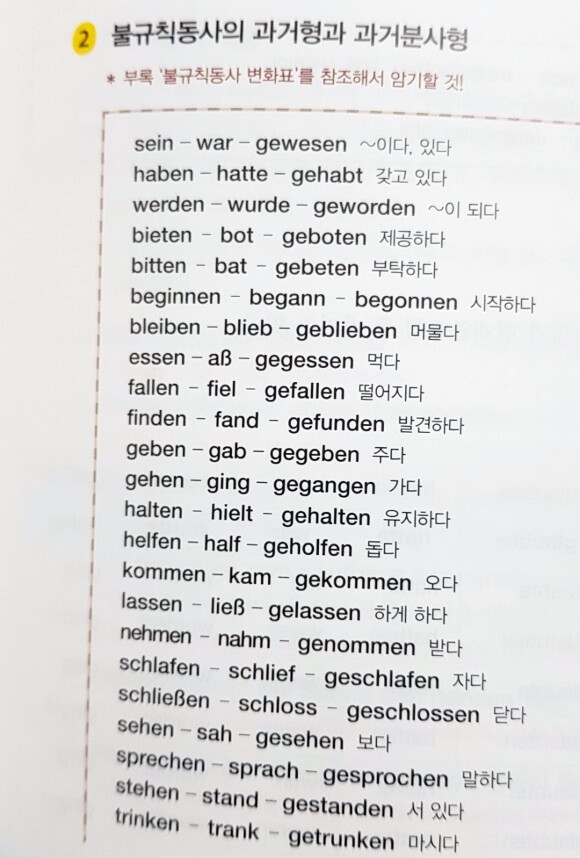
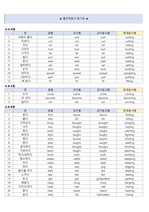

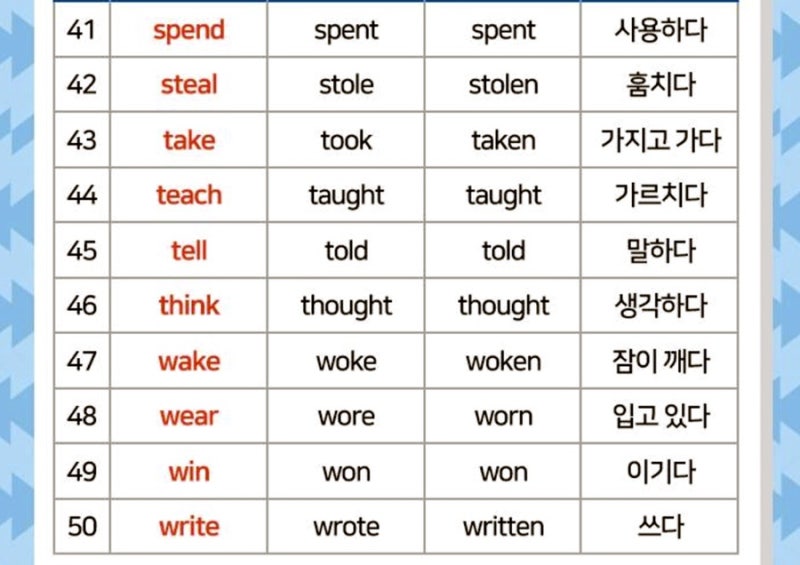
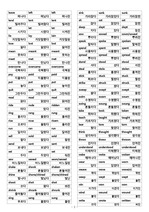

![수능대비 불규칙동사 테스트[3단변화][180단어] 레포트 수능대비 불규칙동사 테스트[3단변화][180단어] 레포트](https://image4.happycampus.com/Production/thumb212/2012/10/22/data11629522-0001.jpg)
![Chapter2] PSS2-4 불규칙 변화 동사의 과거형 [중학영문법3800제 2학년] - YouTube Chapter2] Pss2-4 불규칙 변화 동사의 과거형 [중학영문법3800제 2학년] - Youtube](https://i.ytimg.com/vi/hTK9TteFmLY/maxresdefault.jpg)


![영어 동사의 3단 변화 (규칙형) 쉽게 정리 [-ed 발음] 영어 동사의 3단 변화 (규칙형) 쉽게 정리 [-Ed 발음]](https://t1.daumcdn.net/cfile/tistory/9993FB415EB0B9B82D)
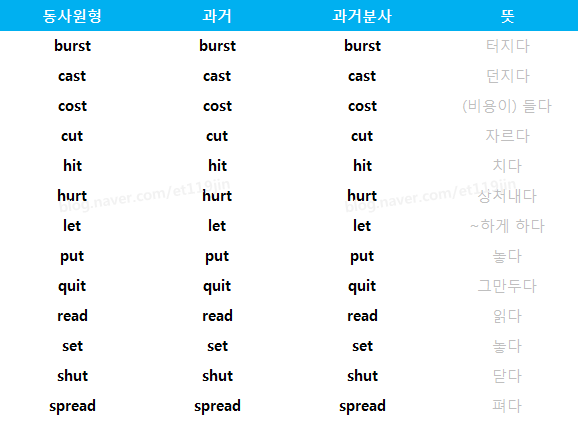

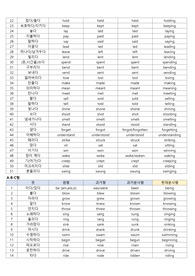

![불규칙 동사의 3단 변화] 동사 변화 (현재-과거-과거분사) 쉽게 배우기 #불교칙동사 3단변화 # 불규칙동사표 #동사3단변화 - YouTube 불규칙 동사의 3단 변화] 동사 변화 (현재-과거-과거분사) 쉽게 배우기 #불교칙동사 3단변화 # 불규칙동사표 #동사3단변화 - Youtube](https://i.ytimg.com/vi/utfjjw6OELU/maxresdefault.jpg)


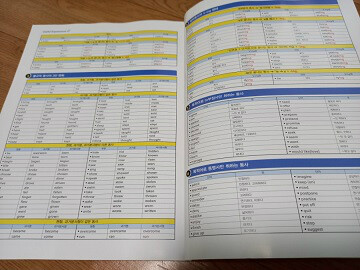



![불규칙동사암기표와 테스트지(3단변화+현재분사형) 시험자료 03강] 동사에 시간 표시하기 > Youtube 영상(대본) | 암기없는 영어 원리” style=”width:100%” title=”03강] 동사에 시간 표시하기 > YouTube 영상(대본) | 암기없는 영어 원리”><figcaption>03강] 동사에 시간 표시하기 > Youtube 영상(대본) | 암기없는 영어 원리</figcaption></figure>
<figure><img decoding=](https://i.ytimg.com/vi/mpyH9BMIJ60/mqdefault.jpg)

![중3 영어 기본 불규칙동사 테스트 [3단변화][80단어] 시험자료 초중고 생활/교육 > 중등교육 > 중2 불규칙동사 테스트[3단변화][60단어]” style=”width:100%” title=”초중고 생활/교육 > 중등교육 > 중2 불규칙동사 테스트[3단변화][60단어]”><figcaption>초중고 생활/교육 > 중등교육 > 중2 불규칙동사 테스트[3단변화][60단어]</figcaption></figure>
<figure><img decoding=](https://previews.jisikmall.com/thumb/5072000/5072557_1_4.jpg)




![[09] 불규칙 동사 3단 변화형 같이 외워볼까요? 2분 집중! 03강] 동사에 시간 표시하기 > Youtube 영상(대본) | 암기없는 영어 원리” style=”width:100%” title=”03강] 동사에 시간 표시하기 > YouTube 영상(대본) | 암기없는 영어 원리”><figcaption>03강] 동사에 시간 표시하기 > Youtube 영상(대본) | 암기없는 영어 원리</figcaption></figure>
<figure><img loading=](https://i.ytimg.com/vi/C0tPuvAjYXA/mqdefault.jpg)

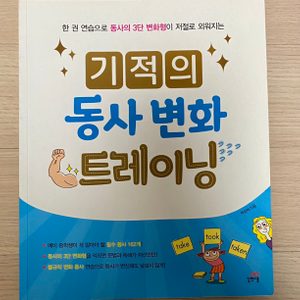



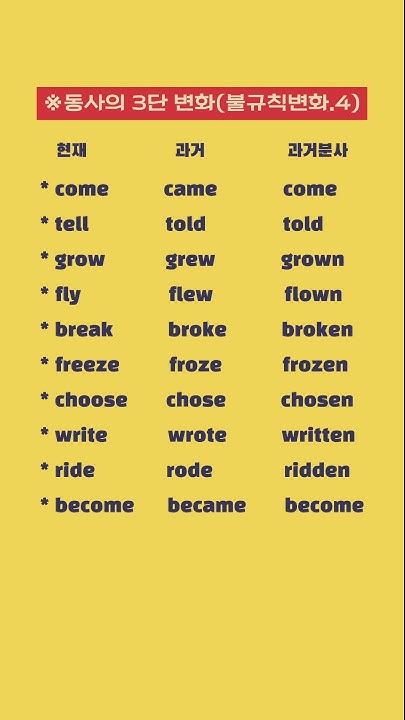
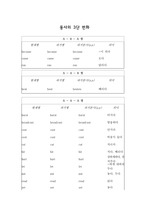
Article link: 동사의 3단변화.
주제에 대해 자세히 알아보기 동사의 3단변화.